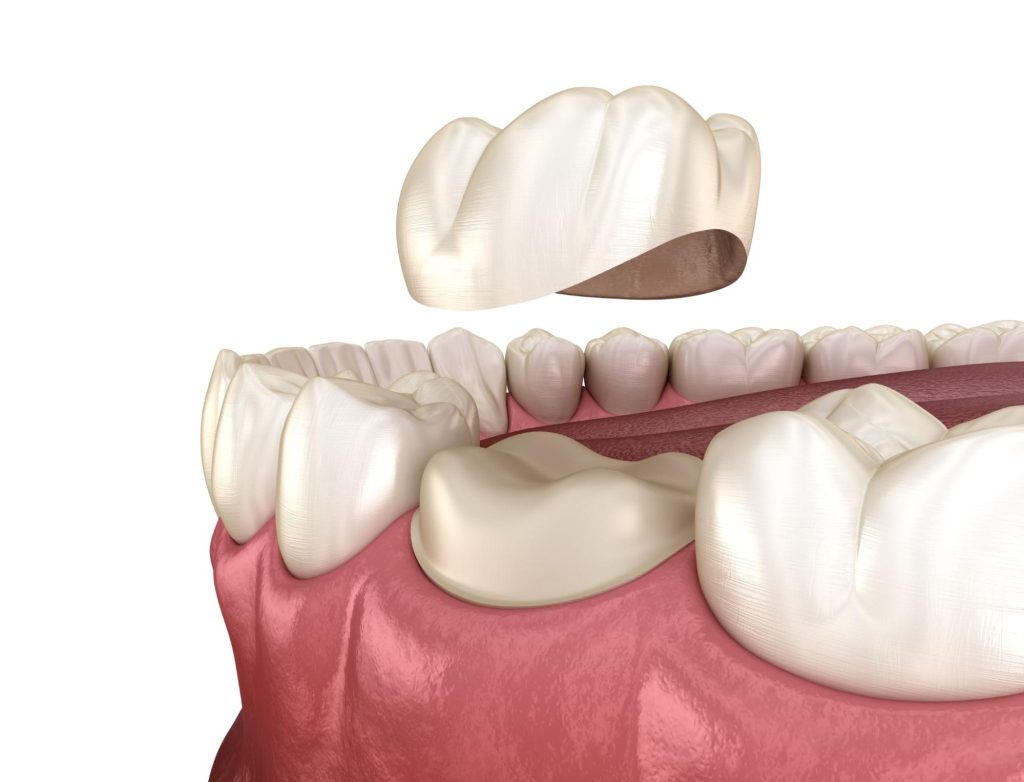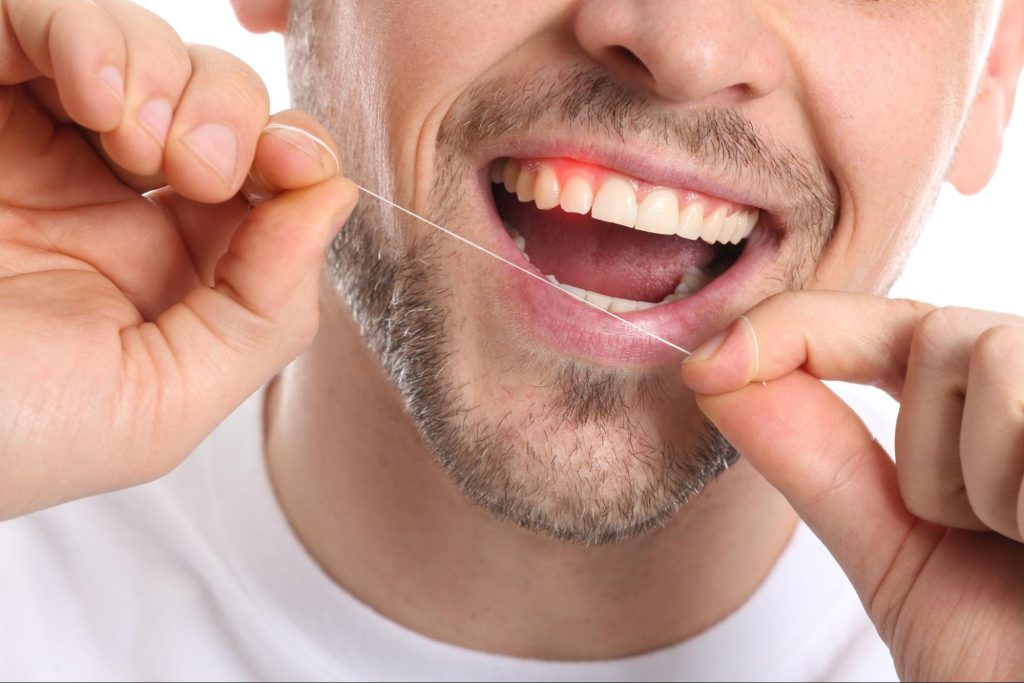When it comes to clear aligners, Invisalign has ruled the roost since its inception. Made from a clear plastic material, Invisalign aligners are a less noticeable solution for teeth straightening, fixing bites and alignment issues.
But sometimes, Invisalign aligners need a little extra help to align your teeth to the desired position. This is where Invisalign attachments come in. They are small tooth-coloured buttons that come under your aligners to gently exert pressure for more precise results. These attachments make it possible to correct orthodontic issues that can’t be fixed with aligner trays alone.
What do Invisalign attachments do, and does everyone need them for Invisalign to work? Find out the answers in our comprehensive guide.
What are Invisalign Attachments?
Invisalign attachments are small tooth-coloured dots or bumps made of dental composite material bonded to specific teeth during the Invisalign treatment process. These attachments are strategically placed to help the aligner trays apply precise and controlled forces on the teeth, facilitating tooth movement and improving treatment outcomes.
Invisalign attachments are made from tooth-coloured resin material, making them discreet and less noticeable compared to traditional braces. They blend in with your natural teeth and are only slightly visible up close or without the aligners.
Attachments are custom-made for each patient based on their unique treatment plan. They are designed to create specific pressure points on the teeth, allowing the aligner trays to grip the attachments securely and transfer the desired forces to guide tooth movement. The attachment shape, size, and location vary depending on your orthodontic needs.
How do Invisalign Attachments Work?
Invisalign attachments work with the aligner trays to facilitate tooth movement during orthodontic treatment. They anchor the aligners, allowing for a more secure fit to enable the aligner trays to exert controlled forces on the teeth in specific directions, gently moving teeth to the desired position. The attachments help address complex tooth movements, such as rotation or vertical adjustments, and improve treatment predictability for more successful outcomes.
When do you Need Invisalign Attachments?
Not every Invisalign case requires attachments. They are commonly used in orthodontic cases requiring additional pressure to align the teeth or jaw. This is determined in the initial evaluation with the help of the digital treatment plan.
Invisalign attachments may be required to help with:
Tooth Rotation
Invisalign attachments can provide additional grip and leverage to help rotate teeth that are severely misaligned or rotated. The attachments create precise pressure points, enabling the aligner trays to exert rotational forces on the teeth and gradually guide them into the correct position.
Vertical Tooth Movement
Aligners with attachments can aid in vertical tooth movements, such as extrusion (bringing a tooth outward) or intrusion (pushing a tooth inward). They help apply controlled forces to the teeth, encouraging them to move up or down in the jaw to achieve the desired alignment.
Complex Bite Corrections
Invisalign attachments can assist in addressing complex bite issues, such as deep or open bites. By strategically placing attachments on specific teeth, the aligner trays can exert targeted forces to fix bite alignment and improve jaw function.
Precision Tooth Control
In some cases, precise control over tooth movement is required to achieve optimal results. Invisalign attachments allow more targeted and predictable force to exert pressure. This precision is particularly beneficial when addressing specific tooth alignment or spacing issues.
The Process of Getting Invisalign Attachments
Invisalign attachments are not used with every treatment. This is determined by your dentist during the consultation and evaluation phase with the help of advanced digital technology. X-rays, digital impressions, and 3D scanning are used to create a virtual model of your teeth, helping simulate planned tooth movements and create a personalised treatment plan. This determines the need, placement, size, and number of teeth that need attachments. Some patients might not need the buttons, while others may need both buttons and elastics.
The process for getting Invisalign with attachments involves:
- A consultation to assess your orthodontic needs and formulate a treatment plan with 3D imaging technology. This determines which teeth need buttons and will be used to design a series of aligner trays to be used during treatment.
- Next, your dentist will prepare your teeth for attachment placement by cleaning and roughening the surface.
- A template will be placed on your teeth to mark the placement of the attachments.
- The composite gel will be used to fill the holes in the template for the teeth that need attachments.
- The gel will be hardened with a special light, and the template removed. The excess will be cleaned off and shaped to resemble tiny, tooth-coloured bumps that will come under your aligners. These can be round, square, or triangular based on the type of alignment or orthodontic issue being corrected.
- Your dentist will then guide you on inserting and removing your prepared aligner trays with the attachments.
Once your treatment is complete, the attachments will be removed, and the teeth polished and buffed for a smooth appearance. You will be given clear retainers to cement the teeth in their new position after your Invisalign treatment is complete.
The Benefits of Invisalign Attachments
Some of the benefits of Invisalign attachments include:
Enhanced Tooth Movement
Invisalign attachments provide additional control and stability, allowing for more precise tooth movements. They help address complex cases involving tooth rotation, vertical movement, or the need for precise tooth control, improving treatment outcomes.
Improved Treatment Predictability
Invisalign attachments help exert more targeted forces on the teeth, increasing the predictability of tooth movement. This helps ensure the desired results are achieved within the estimated treatment timeline.
Discreet Appearance
Invisalign attachments are made from tooth-coloured resin material, making them less noticeable compared to traditional braces. They blend in with the natural tooth colour and are almost undetectable after wearing the aligner trays.
Comfortable
The small dots or buttons are more comfortable than the brackets and wires of traditional braces. They are only applied on the teeth which need extra pressure and are bonded to the centre of the teeth for added comfort and less visibility.
Tips for Managing Invisalign Attachments
The application of attachments with Invisalign treatment has made it possible to correct more complex orthodontic issues which may not have been possible to fix with traditional aligner trays alone. The upside is that you still get a discreet treatment option instead of metal braces. But Invisalign attachments are bonded to your teeth for the remainder of your treatment or until your dentist feels they are no longer needed. This requires additional care to maintain your oral health and aligner routine to achieve successful results.
Here are some tips to help you manage your Invisalign attachments:
- Brush your teeth twice daily, ideally after each meal, to remove any plaque or food particles that can accumulate around the attachments.
- Follow your dentist’s instructions about inserting and removing the aligners to ensure the attachments remain secure and intact throughout your treatment.
- When removing your aligner trays, take extra care around the attachments to avoid accidentally dislodging them. Remove the aligners slowly and carefully, using both hands and applying gentle pressure to release the aligners from the attachments. Avoid excessive pulling or twisting motions that could put undue stress on the buttons.
- Handle aligners with your fingertips, avoiding touching them with nails or biting down on them. Applying excessive force or pressure to your aligners can potentially damage or dislodge the attachments.
- Avoid hard or sticky foods as this can put excessive pressure on the attachments and increase the risk of damage or detachment.
- Don’t miss out on scheduled follow-up appointments to monitor your progress to ensure the attachments are secure and functioning properly.
- Wear your aligners for the recommended 22 hours a day, cleaning them before putting them on.
Teeth Alignment Made Easy with Invisalign
The magic of Invisalign lies in its personalised approach. Each set of teeth is unique and requires a different treatment plan to correct teeth alignment or bite problems, using custom made aligners and attachments. If you’ve been hesitant about getting orthodontic treatment because of aesthetics, Invisalign may be an ideal solution for you. At Mosman Fine Dental, we offer Invisalign and a range of orthodontic braces suited to your dental and lifestyle needs. With comprehensive evaluation, bespoke treatment plans and cutting-edge technology, we can help you achieve straighter teeth discreetly and comfortably. Book a consultation today,



